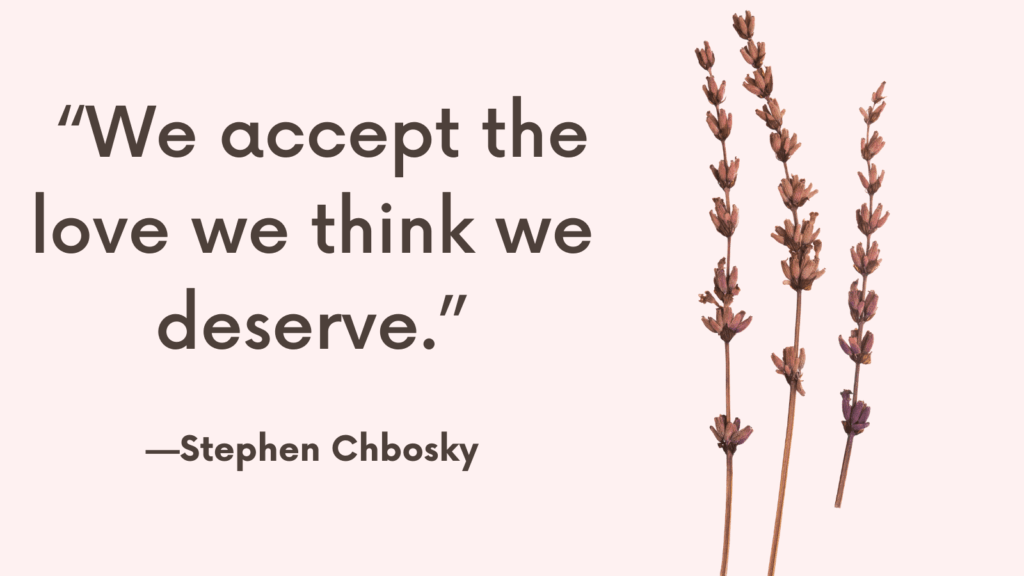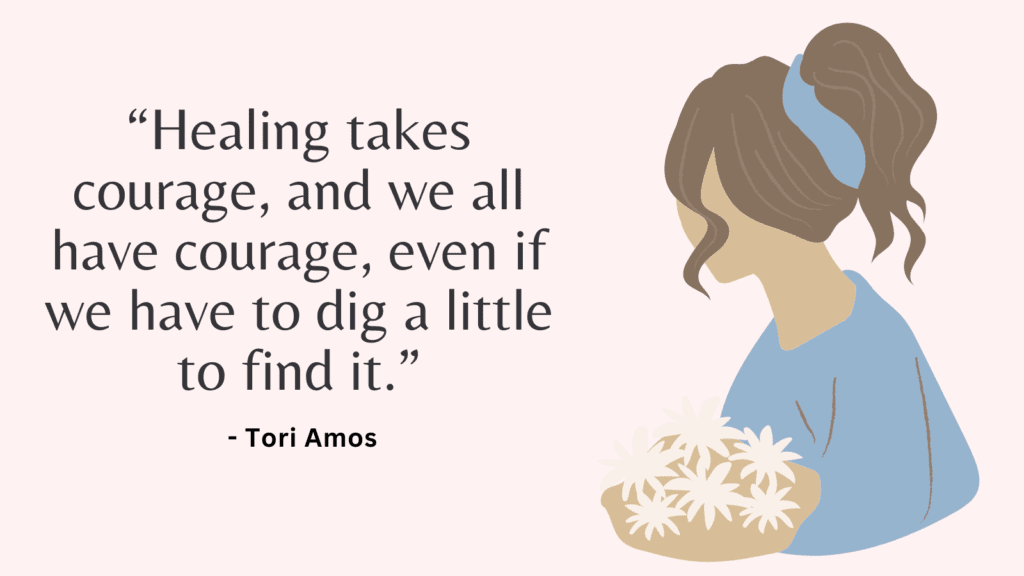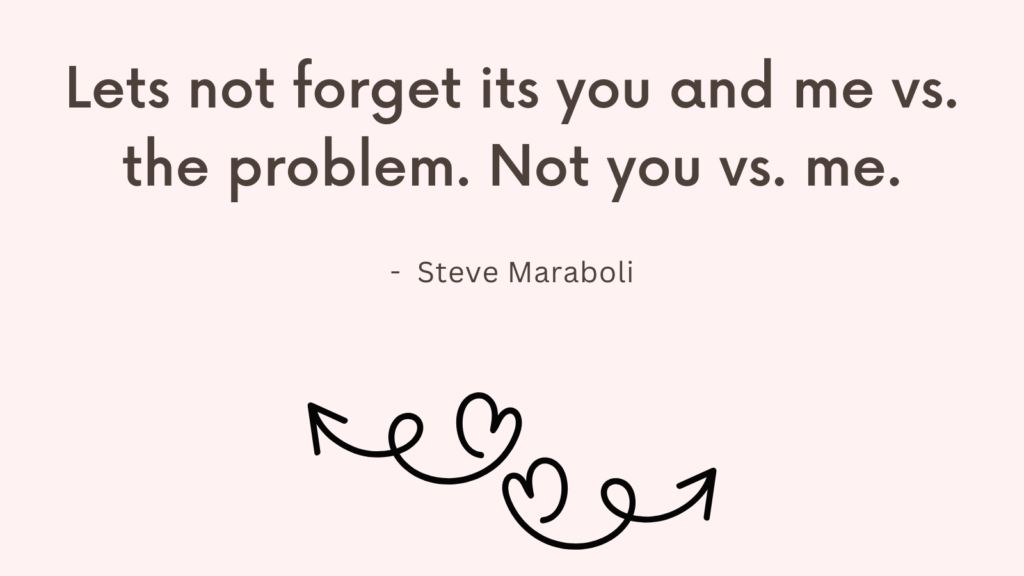In this post, you’ll learn all about earned secure attachment – what it is and how to become more securely attached.
What Is Attachment Style?
Attachment style refers to the characteristic way people relate to others in the context of intimate relationships, which is heavily influenced by :
(1) how easy or challenging it is for us to trust others and identify those who would hurt us and closing off to them without closing off to everyone else
(2) how well we are able to share our experiences with others and bond with them
(3) how willing we are to both accept and offer others emotional
(4) how able we are to soothe ourselves
Attachment styles are built in infancy and follow the individual into adulthood.
There are three attachment styles: secure attachment, anxious attachment, and avoidant attachment.
Note: fearful-avoidant attachment style, also known as disorganized attachment is a combination of the preoccupied and dismissive-avoidant styles of insecure attachment.
1. Secure Attachment
Characteristics of Secure Attachment include:
- You actively help yourself and soothe yourself when in pain.
- You are able to ask for emotional support when you need it and are ready to provide it for others, too.
- You are comfortable showing others your own thoughts and feelings, instead of focusing on providing or receiving help only.
- You operate from a foundation of curiosity about others.
- You trust that others will be there when you need them.
- You have a balanced view of your childhood, remembering both positive and painful events.
- You don’t excessively self-disclose to those you don’t know well.
- When facing conflict in relationships, you may become angry, but will not overreact (e.g., by saying or doing things that are too destructive), nor become cold toward the other person and withdraw.
- Your relationships grow and develop gradually and if they must end because the relationship is not working, the relationship likely ended gradually as well without simultaneously closing off to other relationships.
A secure attachment style is achieved through consistent and nurturing interactions with caregivers and other important people in our lives during childhood.
However, even if someone did not develop a secure attachment style during childhood, it is possible to work towards earning it through self-awareness, reflection, and seeking support from trusted individuals or therapists.
2. Anxious Attachment
Characteristics of Anxious Attachment include:
- You are often preoccupied with whether or not others care about you and will be available in time of need.
- You often lean on others for emotional support without being an active part in helping yourself.
- You may forget to express appreciation when helped, out of fixation on the need for additional support and feeling it is impossible to get enough of that support.
- You are overly sensitive to perceived or real rejections.
- You often experience intense, painful emotions.
- You may not be able to recognize your own strengths and what you have to offer the world.
- When remembering childhood, you fixate on everything that hurt and find it difficult to remember the good parts about it.
- When facing conflict in relationships, you may become explosively emotions and find it difficult to soothe yourself.
- Your relationships may begin very intensely and progress very quickly, with early disclosure of your deepest thoughts and feelings, and may end just as quickly.
- You often pull people close, especially when feeling lonely, but will abruptly push them away when feeling uncomfortable close.
- You may stay longer in toxic relationships, preferring misery to the absence of a relationship.
- You may view relationship as the solution to your problems and the source of your own self-worth and happiness.
3. Avoidant Attachment
Characteristics of Avoidant Attachment include:
- You may have great difficulty starting or maintaining a conversation with others. You find it easier to relate when there is a help to give or a clear topic of discussion.
- You have difficulty asking for and receiving help from others, especially emotional support.
- When receiving help, you may not be appreciative because it feels upsetting to need help and you may feel compelled to pay it back.
- You feel often obsessed with competence and would feel intense shame following failure.
- You often want to share yourself with others, but don’t know how.
- You have difficulty listening to others and may find yourself rushing to problem-solving and giving unsolicited advice.
- You may view your childhood as generally good, but memories lack detail and depth and doesn’t reflect the complexity of your childhood.
- In times of need, you may withdraw from others and find it irritating when others offer help.
- When facing conflict in relationships, you may become cold and focus excessively on proving that you’re right, instead of focusing on mutually creating the solutions and understandings of each other.
- You may walk away from workable relationships too quickly.
Note: You may have more than one attachment style or shift attachment styles overtime or depending on the relationship. whatever is your attachment style, the goal here is to become more secure.
What Is Earned Secure Attachment?
Earned secure attachment is a term used in psychology to describe an individual’s ability to develop a secure and positive attachment style with others, despite any past negative or insecure attachment experiences.
This attachment style is developed by individuals who have been able to process and work through their early childhood attachment experiences, often with the help of therapy or other support systems.
They are able to form healthy and lasting relationships, have a strong sense of self-worth, trust in others, and are comfortable with emotional vulnerability.
Top 8 Tips To Earned Secure Attachment
#1. Practice Mindfulness
What Is Mindfulness?
Mindfulness refers to becoming aware of your experience, including your thoughts, emotions, needs, physiological and environmental experiences.
You do that by becoming a curious observer of your own present experience.
How Mindfulness Can Help?
Mindfulness mimics emotionally responsive parenting.
The securely attached child has had their parent label and help them recognize their emotions and needs (e.g. Are you upset? Would you like a hug?”)
By becoming mindful of your emotions and needs, you recreate that parenting.
Mindfulness Practice
Here’s a simple mindfulness exercise you can do anytime throughout the day:
1. Take a deep breath and focus on the sensation of the air entering and leaving your body.
2. Notice your surroundings without judgment – what do you see, hear, smell, and feel?
3. Without trying to change anything, simply observe your thoughts and emotions as they come and go.
4. Bring your attention back to your breath whenever your mind wanders.
By practicing this exercise regularly, you can cultivate a greater sense of awareness and presence in the present moment.
#2. Increase Your Emotional Awareness
When you have a greater understanding of your own emotions, you are better able to express them in a healthy and constructive way, rather than resorting to negative behaviors like avoidance or aggression.
Additionally, being emotionally aware helps you to be more attuned to the emotions and needs of others, which fosters stronger relationships and deeper connections. This leads to a stronger sense of security and attachment in your relationships.
Start by paying attention to the feelings that you experience throughout the day. Try to pinpoint what triggers those emotions and how they make you feel.
Once you’ve identified your emotions, give them a label. This will help you understand them better and communicate them more effectively.
Avoid distracting yourself from your emotions. Instead, learn to sit with them and observe them without judgment. Focus on your physical sensations and breathing.
You may find the following journal prompts helpful for your practice:
- What emotions am I feeling right now and how strong are they?
- What situations or people tend to trigger certain emotions in me?
- How do I typically react when I experience strong emotions?
- Are there any patterns or themes in my emotional experiences over the past week/month/year?
- How do my emotions impact my thoughts and behaviors?
- When was the last time I felt truly content and at peace? What contributed to that feeling?
- What emotions do I tend to suppress or avoid, and why?
Related: How To Feel Your Feelings? Top 9 Difficult Emotions To Cope With In Healthy Ways

#3. Build Your Self-Esteem
People who struggle with low self-esteem often experience high levels of anxiety and fear in relationships. This can cause them to be clingy, jealous, or distant. Building your self-esteem can help you feel more comfortable and secure in relationships, reducing anxiety and fear.
The following are some ideas to help you increase your self-esteem:
- Focus on setting realistic, achievable goals for yourself and work towards them. Celebrate your achievements along the way.
- Learning new skills can also increase confidence and improve self-esteem. Take a class, try a new hobby, or volunteer in your community.
- Make a list of your personal strengths. Think about the qualities and characteristics that you possess that make you unique and valuable.
- Reflect on past accomplishments. Look back on your life and identify moments when you achieved something that made you feel proud.
- Do things that make you feel good about yourself. Whether it’s getting a new haircut or pursuing a hobby, engage in activities that make you feel happy and fulfilled.
Related: Top 18 Self Esteem Exercises (+FREE CBT For Self-Esteem Worksheets PDF)
#4. Examine Your Beliefs About Relationships
Challenging negative beliefs about yourself and relationships can make you more securely attached.
Identify any negative beliefs you have about relationships or yourself and try to challenge them.
The following are some common negative beliefs to challenge:
- I’m not good enough
- I don’t deserve love
- All relationships will eventually end in heartbreak.
- It’s impossible to find someone who truly understands and accepts me.
- Relationships are more trouble than they’re worth.
- Being single is preferable to being in a relationship because it’s less stressful and complicated.
- Love is temporary and fades over time.
- Relationships only lead to disappointment and broken promises.
Here are some prompts that you can use to challenge negative beliefs:
- What evidence is there to support this belief?
- Is this belief based on facts or assumptions?
- Have I ever questioned this belief before?
- How do I feel when I think about this belief?
- Does this belief serve me or hinder me in reaching my goals?
- Am I judging myself too harshly?
- Is this belief rational or irrational?
- What would be a more helpful or positive belief to replace this negative one?
- What would I say to a friend who has this belief?
Related: What Causes Cognitive Distortions? (+Top 10 Common Cognitive Distortions & How To Challenge Them)

#5. Use Affirmations
Affirmations offer a more positive alternative to any negative beliefs you may have. They can also help you develop a positive and supportive inner voice.
Here are some examples of affirmations that can help:
- “I am worthy of love and affection.”
- “I am capable of forming healthy relationships.”
- “I am learning to trust myself and others.”
- “I am open to giving and receiving love.”
When you repeat this affirmation, you become more receptive to both giving and receiving love, which can help you form deeper connections with others.
By regularly using affirmations that support healthy attachment, you can help shift your mindset and build more positive and secure relationships with yourself and with others.
Related: Best 50 Codependency Affirmations For Recovering Codependents
#6. Act Opposite To Your Anxious Or Avoidant Style
If you have an anxious style, try to practice relaxation techniques such as deep breathing, meditation or progressive muscle relaxation.
This will help you calm your mind and reduce the physical symptoms of anxiety.
Try to practice self-care and pursue your own interests. This will help you become more independent and cultivate a sense of self.
Related: How To Heal From Anxious Attachment Style In 5 Steps
If you have an avoidant style, try to face your fears gradually using exposure therapy.
Start with small steps and increase your level of exposure over time. This will help you build confidence and reduce the impact of your avoidance behaviors.
Remember, change takes time and effort, but with patience and consistency, you can overcome your anxious or avoidant tendencies and live a more fulfilling life.
Related: Top 9 Avoidant Attachment Triggers (+7 Tips On Overcoming Avoidant Attachment Style)
#7. Purge Toxic Relationships
Identify toxic relationships.
Examine how you feel after spending time with someone. Do you feel drained, unhappy, or negative?
If so, this relationship is likely toxic and needs to be addressed.
If you can’t let go of a toxic relationship consider setting healthy boundaries.
Decide what behaviors you will no longer tolerate from this person and communicate it to them in a calm and respectful manner. For example, you can tell them that you will no longer accept being spoken to disrespectfully.
By letting go of toxic relationships, you can create space in your life for healthier and more fulfilling relationships.
Focus on building secure attachments with people who value and respect you.
You deserve to be surrounded by people who uplift and support you.
Related: Top 25 Tips On How To Set Boundaries In A Toxic Relationship? (+FREE Worksheets PDF)
#8. Work On Healing From Past Negative Experiences In Therapy
Consider seeking professional help from a licensed therapist or counselor who can assist you in working on healing from past negative experiences.
Through therapy, you can explore the effects of these experiences on your mental and emotional wellbeing, learn ways to cope with negative feelings and emotions, and develop strategies for moving forward towards a more positive and fulfilling life.
It may take time and effort, but with guidance and support from a trained professional, you can work towards healing and finding inner peace. Remember, taking care of your mental health is a vital component of overall wellness.

Conclusion
Our attachment styles develop during childhood and adolescence based on our early relationships with caregivers.
However, it is possible for adults to develop more secure attachment styles through various interventions such as therapy, self-reflection, and developing healthy relationships.
Earned secure attachment allows an individual to move past any previous negative attachment experiences and build positive and healthy relationships.
It may require some effort and work, but it is definitely achievable.
FAQ
How is attachment style formed?
Attachment style is primarily shaped by interactions with caregivers during the early years of life.
Secure attachment typically develops when caregivers consistently meet the needs of the child, providing comfort, support, and a secure base for exploration.
In contrast, inconsistent, neglectful, or intrusive caregiving can lead to the development of insecure attachment styles.
Can attachment style change over time?
While attachment styles are relatively stable, they can be modified through conscious effort and therapeutic interventions.
Individuals who have experienced insecure attachment in the past can develop more secure attachment styles through self-reflection, building healthy relationships, and working with mental health professionals.
Related: Best 10 Books On Healing Anxious Attachment
How does attachment style impact adult relationships?
Attachment style significantly influences the quality and dynamics of adult relationships.
Securely attached individuals tend to form healthy, stable relationships characterized by trust, effective communication, and emotional support.
Insecurely attached individuals may experience challenges such as excessive jealousy, fear of abandonment, difficulty with emotional intimacy, or a tendency to repeat negative relationship patterns.
Can an individual have a different attachment style in different relationships?
Yes, it is possible for individuals to exhibit different attachment styles across various relationships.
Attachment styles can be context-dependent, influenced by the specific dynamics and history of each relationship.
For example, someone may display a dismissive-avoidant style in romantic relationships but a secure style with friends or family members.
Can therapy help improve attachment style?
Therapy, particularly attachment-based approaches like Emotionally Focused Therapy (EFT) or Attachment-Based Therapy, can be highly beneficial for individuals seeking to understand and improve their attachment style.
These therapeutic modalities focus on increasing awareness of attachment patterns, healing unresolved wounds, and developing more secure and satisfying relationships.
Related: Best 10 Anxiety In Relationship Books



